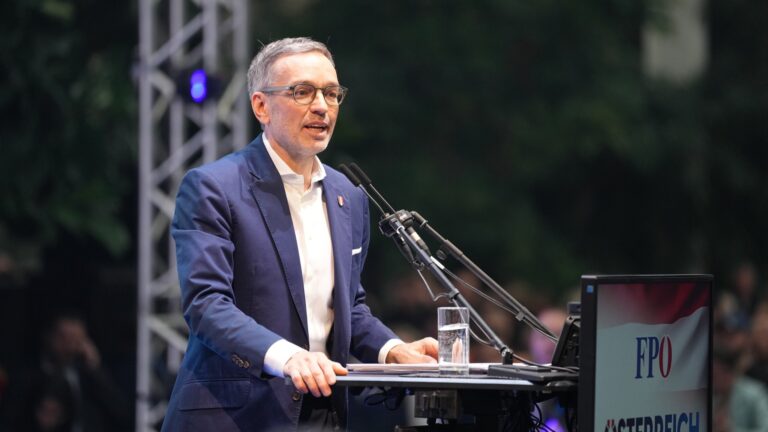Protests on the Ground
On July 4th, Dutch authorities clashed with the country’s farmers, who had organized en masse to protest new government rules affecting agricultural life: restrictions on fertilizer and reduction of livestock. With multiple arrests and with over 2oo fines issued, as reported by NOS, Monday’s protest marks the latest escalation in an ongoing contest of wills.
On the current affairs program Op1, police chief Willem Woelders said that most of the fines were handed to tractor drivers blocking highways. After some arrests, such blockades were quickly lifted, he added.
The Dutch police are taking farmers out of their tractors and placing them under arrest. https://t.co/363xQ3IVwh pic.twitter.com/phjiidoIjB
— Keean Bexte (@TheRealKeean) July 4, 2022
According to Woelders, a total of fifteen distribution centers experienced gridlock, which resulted in empty shelves. The special Mobile Unit intervened in Sneek, Heerenveen, and Zwolle to end these blockades. One in Nijkerk for the Boni chain of supermarkets managed to hold out longer than the others, but was finally broken on July 5th.
Images on Twitter reveal that police resorted to various tactics, such as the use of tear gas to disperse crowds.
🇳🇱 Police use tear gas to disperse the blockade of a distribution center by farmers tonight in Heerenveen in the Netherlands.#FarmerProtests pic.twitter.com/15DbcMGlgI
— PPCNEWS24 (@ppcnews24) July 4, 2022
In some cases, the reconnaissance strategy of utilizing ‘Romeo’s’ was followed. Romeo’s are undercover agents who mingle with the crowd, identify the leader(s), after which they report their findings to colleagues, who then proceed in arresting said individual(s). Such techniques proved successful, as illustrated here, where an assumed leader is being dragged away:
The state police, acting on behalf of the PM Mark Rutte, are violently arresting peaceful protesters. This is Klaus Schwabs paradise. He makes the rules here. READ: https://t.co/363xQ3IVwh pic.twitter.com/AV45ydsXbk
— Keean Bexte (@TheRealKeean) July 5, 2022
Sometimes, such undercover agents were exposed. The following clip shows a group of them being chased by angry protestors back to their police van, in which they sought refuge:
Late on Tuesday, shocking images emerged. One was of a policeman drawing a weapon on a farmer seated in his cabin. Another shows a tractor (it is unclear whether it is the same one) driving away, and being shot at two times by presumably the same policeman. No injuries were reported.
Tering. pic.twitter.com/vVsUUSWV3K
— Jens (@thematrixf_) July 5, 2022
Holy fuck. pic.twitter.com/TI0foLem6D
— Tim Douwsma (@timdouwsma) July 5, 2022
Soon after these events, Eva Vlaardingerbroek, a Dutch political commentator who has been vocal on the issue, took to Twitter. Ironically questioning whether there is still such a thing as “the Free West,” she lamented that “they take away everything you own and use their weapons (that you don’t have) to strike you down if you resist.”
🇳🇱 BREAKING: The blockades at the distribution centers have been disbanded by the police under threat of violence & arrest towards the farmers. This is “The Free West”: They take away everything you own and use their weapons (that you don’t have) to strike you down if you resist.
— Eva Vlaardingerbroek (@EvaVlaar) July 5, 2022
A Monday communiqué, quoting police chief Woelders, revealed that the protests were not limited to just farmers—fishermen and truckers also participated.
The report mentions that ship blockades were seen at the ports of Lauwersoog, Harlingen, IJmuiden, Vlissingen, and Den Helder. As a result, ferry services to and from the Wadden Islands suffered. These blockades were short-lived however.
On the highways, farmers were joined by truckers, causing the slip roads on the A1, A37, and A28 to be blocked for some time. Additionally, there were smaller campaigns, with or without blockades, at the Media Park in Hilversum, the provincial government of Noord-Holland in Haarlem, and waste processing companies in Hengelo.
Police Chief Woelders concluded that “as a crisis organization we remain ready,” and that “we will continue to monitor this at a national level,” and concluded that “depending on the situation,” additional personnel could be freed up to handle it.
The Netherlands’ Agricultural Problems are Old Problems
The Netherlands has been dealing with its farmer’s ire for years now. Last month, the introduction of new targets, aimed at reducing harmful nitrogen compounds by 2030 (perhaps not accidentally in line with what the WEF and UN promote as Agenda 2030), threw more oil on the fire.
The government says that such reductions, which it acknowledges would put some farms out of business, are necessary. To slash the emissions of nitrogen oxides from farm animal manure and from the use of ammonia in fertilizer, it estimates a 30% reduction in the number of livestock is needed.
After the U.S., the Netherlands is the world’s largest agricultural exporter. But with it being a much smaller country, farms often lie adjacent to nearby protected nature areas. It is partly for that reason that Dutch and European courts have ordered the Dutch government to address the problem.
As farmers are the obvious victims of such ordinations from above, they feel increasingly singled out for persecution. Speculators fear this pressure is contributing to increasing suicide rates. In relative terms, in amount of suicides the agricultural sector has a top 10 ranking. According to 113, the Netherland’s suicide prevention organisation, between 2013 and 2016, the suicide rate rose from 12.5 to 17.4 per 100,000 farmers. This is considerably higher than the national suicide rate, which registers at 10.6 per 100,000 inhabitants. More recent figures are missing.
On Sunday, the government appointed VVD-politician Johan Remkesa to act as mediator. The move was coldly received. Vice chairman of the Farmers Defense Force Jos Ubels accused the cabinet of “making blunder after blunder and now they are sending out a mediator who has to enter into the conversation unilaterally without being allowed to change the [nitrogen] targets.” Bart Kemp, the leader of farmers’ action group Agractie, emphasized that Remkes enjoys “no confidence” in the agricultural sector.
Preparations for these talks start on July 13th, with their commencement planned for the second half of August. Whether an agreement which is to all parties’ liking emerges from these, most observers would deem unlikely.






